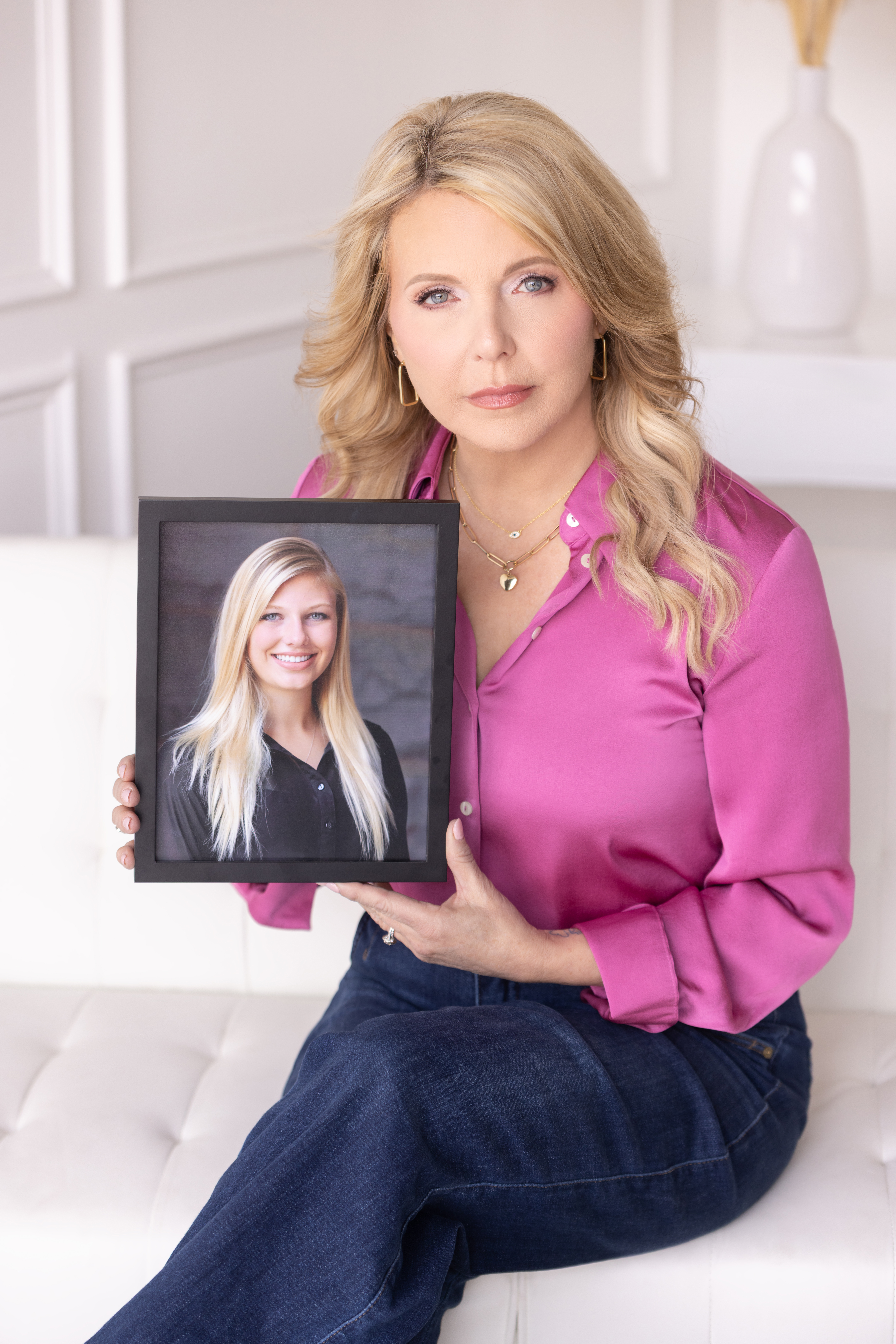“That’s what we lived for”
– Devlin Tommeraasen referring to buying heroin with his friends to feed their addiction.
Over the seven days of the federal drug trial against two Chicago men, I learned more about heroin use and addiction in my community and how many lives it has destroyed. In the end, a jury convicted Maurice Cathey and Corrod Phillips on all six counts against them. The two men were running a heroin and crack cocaine operation out of a rental home in Sioux Falls. Shipments were coming in the mail from Chicago; the drugs hidden in Vaseline jars. The people who purchased heroin from them had no idea it was laced with fentanyl. After listening to the testimony, I’m not sure they would have cared. However, toxicology reports show that the heroin/fentanyl resulted in at least twelve overdoses; plus as many as five deaths, including the death of my daughter, Emily.
Previous blog post on this case.
Secret overdoses
I skipped jury selection, but learned that potential jurors were asked if they had heard Emily’s story and whether or not they had contributed to Emily’s Hope. I showed up on the third day and slid into the bench in the courtroom next to two other mothers — mothers suffering loss in opioid crisis, just like me. Kim Diaz’ 22-year-old son, Layne died, using for the first time after seven months of sobriety. The friend who he got the drug from was testifying against these Chicago men. Shania Hofer was also Emily’s friend. I heard Emily refer to her Shania several times, but had never met her.
Shania herself later overdosed at a Wendy’s fast food restaurant and paramedics were called to the scene. They administered naloxone and Shania was admitted to the hospital. She spent time in intensive care because she had vomited and it had aspirated into her lungs. Her mother, Sharon, just learned all of this for the first time. Shania, as an adult, was not required to notify her mother that she was hospitalized. Shania was sentenced to 20 years in federal prison for providing another man with heroin. He overdosed and survived. The source in all of these cases was Maurice Cathey. Like many desperate addicts, Shania was selling heroin to her friends to feed her own habit.
The same path to addiction
When Shania took the stand, a woman sitting behind me whispered, “She’s so young!” The 22-year-old’s long, straight, brown hair framed her face and she wore glasses. Shania looked more like a college co-ed than someone serving time in federal prison. She was vulnerable and pale. She spoke matter-of-factly when questioned. Her mother had left the courtroom, not wanting her presence there to overwhelm her daughter. There were many sordid details that came out during her testimony; things most of us would consider private matters.
As she spoke, I realized the strong hold heroin had on nearly everyone who testified in this trial. Shania’s story sounded like Emily’s in many ways. She had started smoking weed at age 15. You may have your own opinion about whether or not marijuana is a gateway drug. But the one thing I know for sure: it is not for the developing brain. It sets young people up for addiction in a very powerful way — even more powerful than alcohol. Nicotine does that as well, however, every single person whose story I have heard, after they had become addicted to opiates, started with marijuana.
After using marijuana, Shania began taking prescription opiates. At nineteen, when she couldn’t get pills from the dark web anymore, a friend told her that he could get her heroin. I learned that people don’t go directly to putting a needle in their arm. At first they smoke or snort it. Eventually that doesn’t get them the same kind of high; so they turn to shooting up. Shania explained that when she got high with others who still smoked or snorted heroin, those who used needles would go into another room. It was “embarrassing” to shoot up in front of those who didn’t because it revealed just how far her addiction had progressed.
I learned that a “click” is a half-gram of heroin — about the size of a pea — and the typical dose. Shania said at the height of her addiction, she was shooting up five to ten times a day. She explained the “warm, fuzzy feeling,” and how the drug would make her relaxed and as if nothing else mattered. Withdrawing from the drug, she explained, “feels like you’re dying,” and is 20-times worse than the flu. Shania called it,”The worst sickness in life.” Shania explained that you couldn’t go 12 hours between uses without feeling sick. The withdrawal process she said took five days to even get out of bed and two weeks to feel normal again. Those who use and sell what they get from their suppliers to others, see it as “helping out” a friend so they can avoid getting sick
Heroin users chase the high, but they also are desperate to ward off sickness. Experts have told me that it is a physical and psychological addiction. The monster (opioids) hijack the brain and it becomes what the user lives for; nothing else matters anymore. I learned about the common use of “bleach bombs” among addicts who do it to try to pass a drug test. This isn’t just among heroin users — people on meth use bleach bombs too. They drink a combination of baking soda, bleach and water to pass a urine test. It’s an extremely dangerous practice that isn’t even proven to “clean” the drugs out of the system.
The source dries up
The desperation to get the drug among Shania and her friends was evident in one story that came out during the trial. Cathey’s Sioux Falls home had been raided and he told her that Sioux Falls was now too “hot.” and he returned to Chicago. With that, the heroin supply in town virtually dried up for them. So Shania asked if she drove 573 miles to Chicago, could he get her some? He agreed and she and several others, in desperate need of the drug, arrived in a Chicago warehouse district at 4 a.m. Cathey ordered them to drive around some more; eventually sending another man to meet them with the goods. After the deal was complete, they all got high and turned around and drove all the way back to Sioux Falls.
User after user, as well as those who both used and dealt the drug, took the stand in the Cathey/Phillips case. I followed one young man out of the courtroom after his testimony and asked him if he’d gotten any help. He told me he was currently seeking help at the methadone clinic. I told him about the work we are doing at Emily’s Hope and urged him to seek inpatient treatment.
Devlin Tommeraasen was another witness who was hoping for a reduction in time if he told the truth on the stand. I’ve written about Devlin in my blog post, “Judgment Day,” which you can read here. Investigators say that Devlin got the drug for Emily, which ended up killing her and her death was considered at his sentencing. But just like Shania, Devlin is also an addict. He overdosed in a grocery store bathroom on the day Emily died and was saved, because unlike Emily’s, his overdose occurred in a public place. Devlin’s source for heroin was Corrod Phillips.
The defense
While Cathey had a public defender during the trial, Phillips had a hot-shot Chicago defense attorney representing him in court. Gal Pizzetzky’s online bio boasts that he’s taken more than 100 cases to trial and his website reads, “Need a strong defense? Go for the knockout.” Several times after cross-examining the witnesses, Pizzetzky turned and stared directly and smirked at we three mothers, who were sitting stiffly on the wooden courtroom bench. I glared back. With all of the evidence law enforcement had gathered, there seemed little to defend what these men had been doing. Instead the defense tried to make the jury question whether or not it was really the heroin that caused the overdoses. In a couple of the overdose cases, other non-opioid drugs were present in the victim’s system. Pizzetzky’s only called one person to the stand — an expert witness — a retired coroner from Iowa, who testified that other drugs could work in combination to intensify the effects of overdose. While that may scientifically true, in all of the overdoses that Cathey and Phillips are blamed for, those who lived were revived by naloxone (NARCAN®), which only works on opioids.
The dealers
Cathey and Phillips are both small in stature and wore button down, collared shirts throughout the trial. Both mostly stared straight ahead as the hours ticked by. Sometimes Cathey grinned at those testifying. Other times he seemed to be sketching or doodling on a notebook. A few members of their family and friends sat in the rows behind them. Once during a break, I asked an elderly woman, who had been observing the whole time, if she were related to one of the men. She asked me why I was there. I told her I was the mother of someone who had died and she turned and walked away.
When I saw Cathey and Phillips being brought back into the courtroom they seemed to strut, as if they were confident they would be found innocent. They were not afraid of making eye contact with those of us sitting in the courtroom. There was a boldness and an air of coldness surrounding both men. Neither appeared to be users of the drug they sold, although from the testimony it was evident they were weed smokers. It was also clear they were cocky about the money they were making. In one instance, during a traffic stop, an officer testified that Cathey had thousands of dollars in his pocket. He claimed it was from his girlfriend. A photo in evidence from Phillips’ phone showed a hand holding a large wad of cash. In the house they were operating out of, the jury saw photos of kitchen drawers stuffed full of cash. It occurred to me that human life holds little value for drug dealers. It’s all about swagger, status and greed. They didn’t know my daughter. Nor do I suspect they care that they supplied the heroin laced with fentanyl that killed her.
The verdict
The jury and the rest of us in the courtroom heard recordings of the frantic 9-1-1 calls for help during the various overdoses. Kim Diaz’ cried as her son’s last few hours were recounted. But she said she needed to know what happened to Layne. Nothing would change his fate, but understanding may bring some much needed peace. When the case finally went to the jury, we three mothers were promised a text to let us know when they reached a verdict. Three hours passed and then I got the text. I jumped in my car and rushed downtown When I arrived at the courthouse, I flew up the stairs and pushed through the double doors into the courtroom. The verdict had just been read: Guilty on all counts.
The judge was thanking the jury as I entered and slid onto a wooden bench. I studied Phillips face. He looked down at the ground with no emotion. How I wished at that moment he would have turned to look at me and I would have seen some kind of realization or recognition of what he did on his face. But that was not to be. A few moments later, I watched as the bailiff escorted the two men out of the courtroom. They showed no emotion at all. I walked out into the hallway at the same time as Phillips’ legal team. I bit my tongue, even though there are a few choice words I would have liked to have voiced. There is no defense for what these two men did —the death and destruction they brought into our community. It’s so very tragic that due to the nature of addiction and the abundant supply of these illegal drugs, the cycle will continue despite this verdict.
As I walked out of the pink quartzite building, the street lights lit up the night. Tears of relief streamed down my face. While I had not allowed myself to think about the possibility of Phillips and Cathey being found innocent, in the back of my mind, the fear was always there. I wasn’t overjoyed by the verdict, but I was satisfied that someone was being held accountable — not just for my daughter’s overdose, but for so many others’ as well. The guilty verdict does not bring my beautiful Emily back. Philips and Cathey may not feel any remorse. But at least for now, they cannot destroy any more lives.
Faith, Hope & Courage
Angela
(Update: On February 24, 2020, Cathey was given three life sentences for his drug crimes. On March 2, 2020 Phillips was sentenced to 20 years in federal prison.)

NARCAN® is a registered trademark of Emergent Operations Ireland Limited. Emily’s Hope is not affiliated with, sponsored by or endorsed by Emergent Operations Ireland Limited or Emergent BioSolutions Inc.


